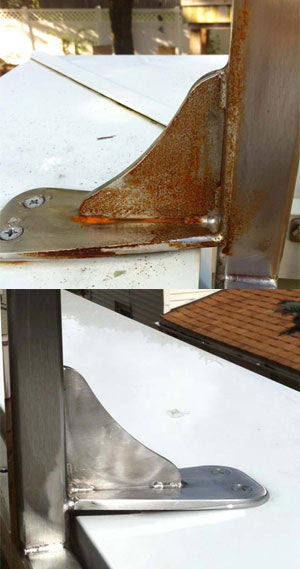If Stainless Steel is Stainless, Why Does it Rust?

Why Does Stainless Steel Rust?

Iron and Chromium
Stainless steel is an alloy made up of iron and at least 10.5% chromium as well as lesser amounts of other elements such as carbon, silicon or manganese. It is the chromium that resists corrosion, making the steel “stainless.” There are over 150 recognized grades of stainless steel, and each has different properties and rust resistance. Some are better at resisting rust than others, but all can rust.Chromium Oxide Protects
Chromium in stainless steel resists rust by forming a thin layer of chromium oxide on the surface of the steel. This is called the “passive layer” and it is a reliable protective coating that is even capable of repairing itself when damaged in many cases.
Free Iron Rusts
When rust is visible on the surface of stainless steel, it is often the result of what is called “free iron”. Free iron is iron that is separate from the alloy, and therefore not protected by the chromium oxide. The potential sources of free iron are many. The important things are:
- Free iron on the surface of the stainless steel can rust.
- Free iron is difficult to remove. Scrubbing or cleaning with soap and water are not enough.
Passivation Removes Free Iron
Free iron can be removed from the surface of stainless steel through a process called passivation. Once the free iron is removed, the chromium layer is left to form chromium oxide and protect the steel from future corrosion.
We Carry Passivation Products
We carry a range of products from CitriSurf® to meet almost any stainless steel passivation requirement.
CitriSurf is a registered trademark of Stellar Solutions, Inc., McHenry, IL US.